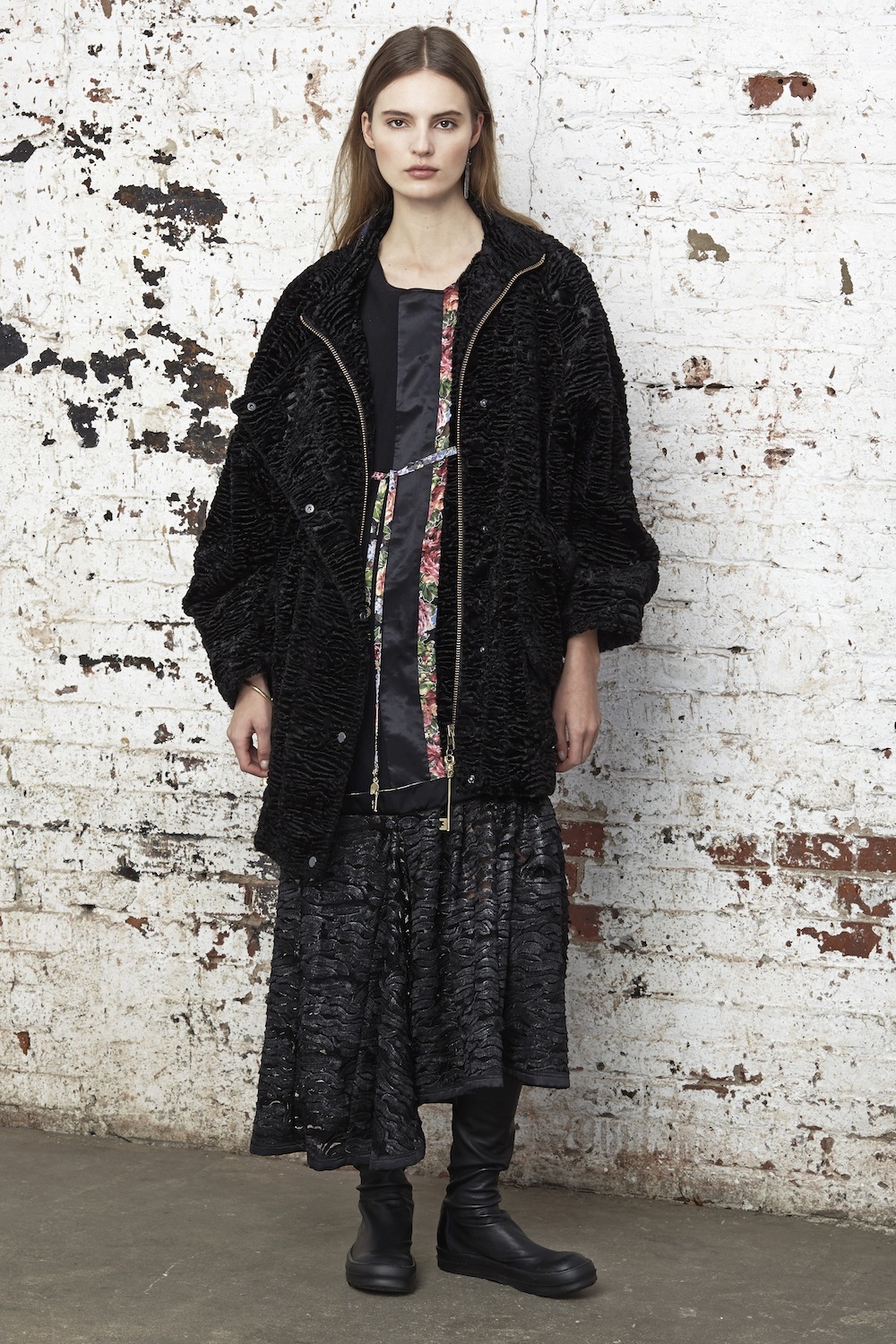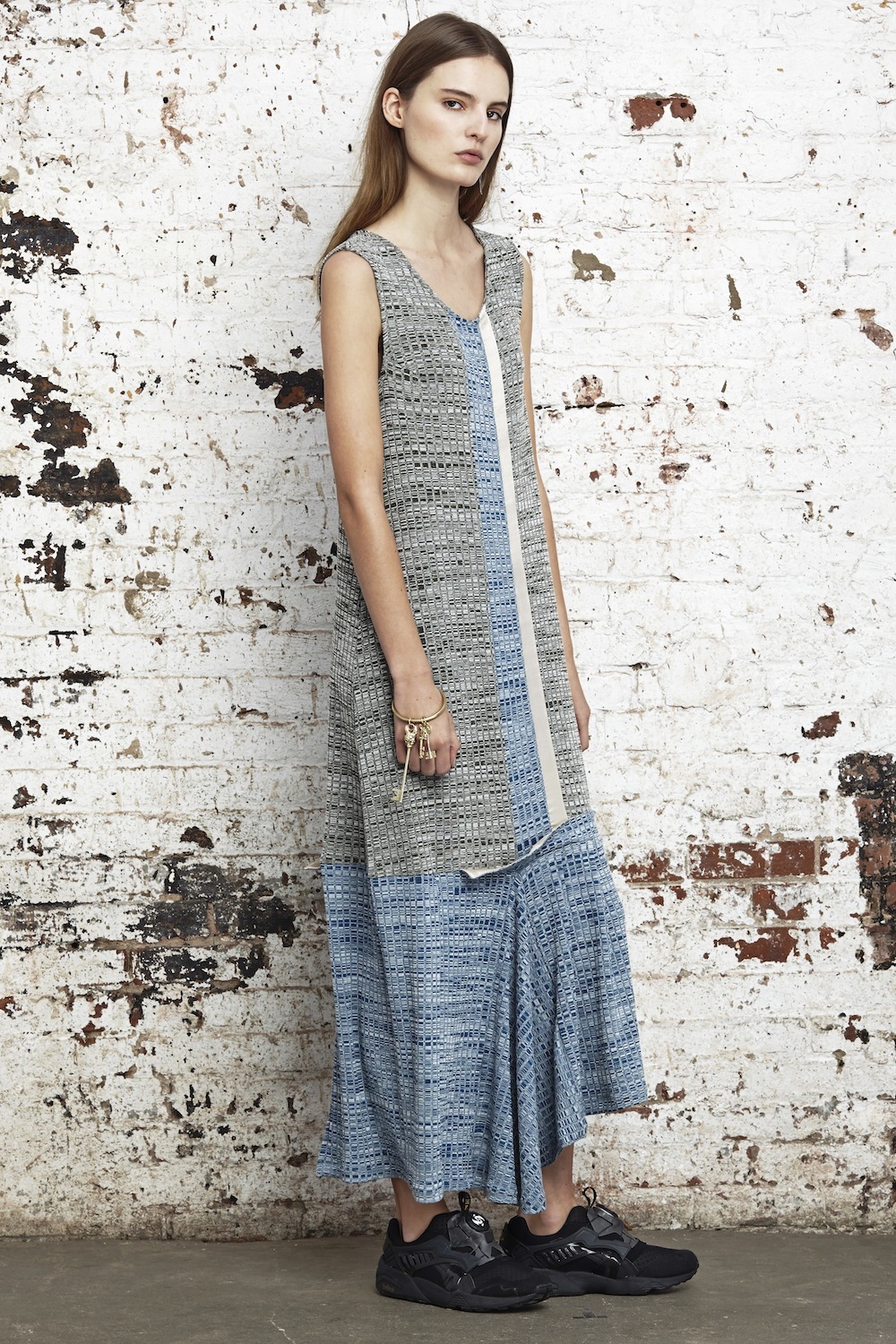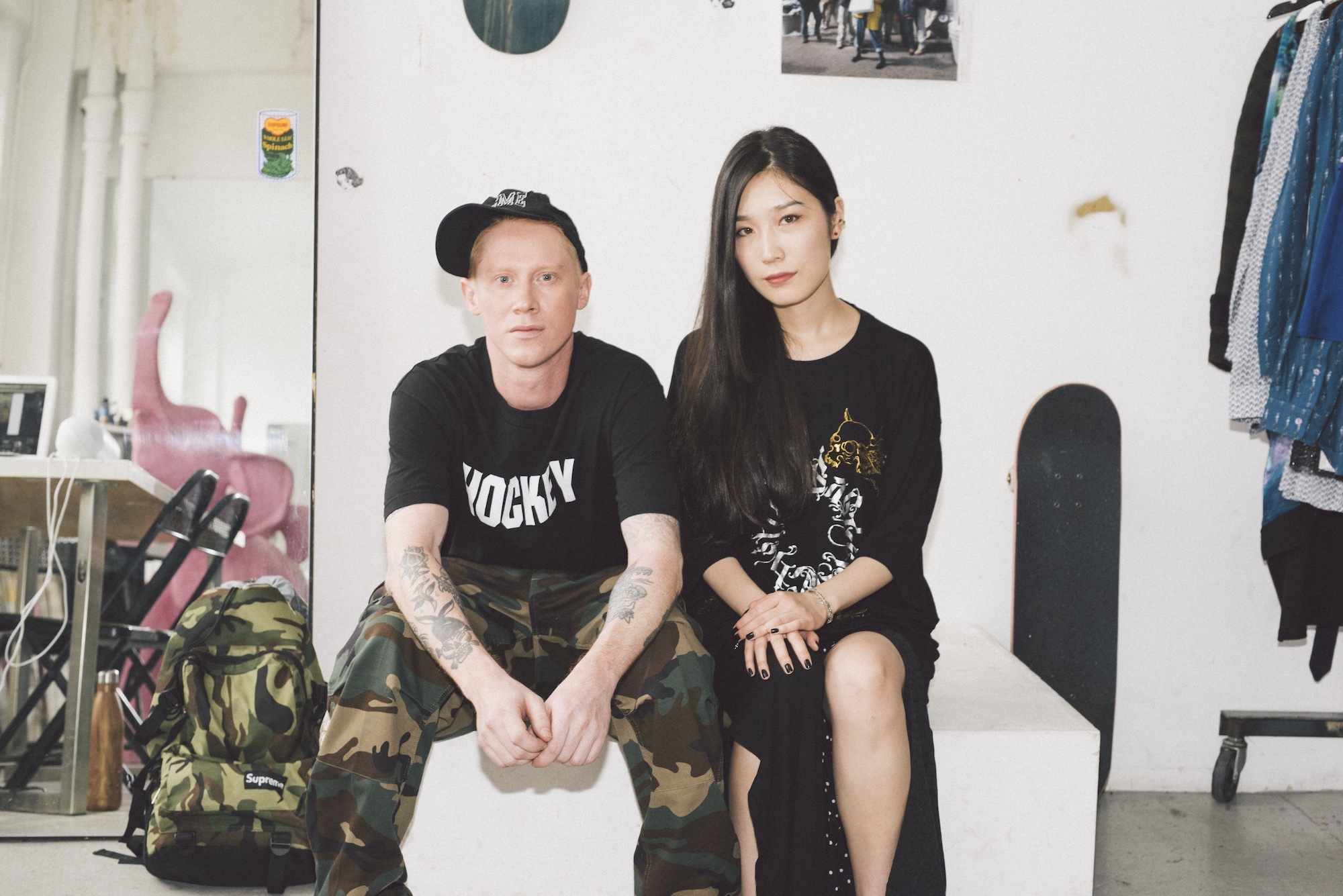Even before Qiaoran Huang and Joshua Hupper launched their bi-continental brand Babyghost five years ago, the designers took creative cues from jetsetting. On one bigger budget company trip, the duo found themselves guests of London’s 18th century member’s only mansion, Home House. “The lady that owned it was really interesting: she had lots of lovers, secret passages, and ton of weird pagan art throughout the entire place. She was Creole and called the Queen of Hell,” Joshua recounted one morning in the Babyghost studio, a white, mirrored cube on Christie Street. “It wasn’t our fault, but we ended up getting kicked out of the hotel — I’m pretty sure we are banned for life! That was our introduction to not only working together, but also starting our ‘hotel lifestyle.’ It hasn’t stopped since then.”
That’s for sure. Since 2010, Babyghost has been selling stateside and in Qiaoran and longtime muse Xiao Wen Ju‘s native China. They’re usually somewhere between Chinatown and actual Chinese towns, but their playful, gritty-pretty collections are anything but jet-lagged. As they gear up for the launch of their secondary line, Stash House, we caught up with the designers to find out more.

How has being bi-continental shaped your vision?
Joshua: We started the line in the middle of the Recession–we’re talking like 2010. It was a weird time. When the company that we were working for started to fold, we had to ask ourselves, “Do we keep working for somebody else or do we start something new?” And then the question became, “How do we make enough money to keep this thing going?”
Qiaoran: I went to college in China before moving to New York, and noticed that there were always delivery men in the dorms because so many girls were constantly ordering online. So when we started talking about launching our own brand, it was with the idea of selling our product online directly to our customers and building an international base. Although we didn’t imagine that it could actually grow for five years!
How does travel influence your work?
JH: We spend at least six months out of the year traveling, one month on vacation. When we are in New York, we almost never leave the Lower East Side, but when we’re in China, we have to move around to Beijing, Shanghai, Weifang, and Hong Kong. We’re never really in the same place for more than a week, which we draw inspiration from, because otherwise it would drive us crazy. Our fall collection is based on the hotels we’ve stayed in — their tapestry fabrics, doorknockers, room keys and room numbers.

So that explains The Shining fall collection reference! One past season also was influenced by True Detective. How do you get inspired?
QH: That’s another part of traveling so frequently: we watch so many movies on planes!
JH: Exactly. True Detective was kind of an obvious one, because there are two of us. The way it was shot in the South and the tattoo and chopper culture–those are usually just starting points. Researching one thing leads to another, but it’s always really intuitive. These collections are almost like a shared diary between the two of us. They’re really cathartic.
You’re also introducing a secondary line, Stash House. What motivated that decision?
JH: In the beginning, our saying was ‘we want to make clothing like iTunes — 99 cents for everything.’ We wanted to make it as accessible as possible and in order to do that, we had to work within certain constraints. But if you want to sell in New York and be taken seriously, you have to step it up. More shops picked up our fall collection because we started using more expensive fabrics and had to raise our prices, but we felt it was necessary to retain that accessibility. We’re going to style everything together for our show, and the idea is that you won’t know which is which.

Xiao Wen Ju is a longtime friend and fan. How did you meet and come to collaborate?
JH: We have a lot of coincidences and that’s another funny one. Not knowing who she was, I had a photo of her posted to an inspiration board for one of the collections I was working on. When Qiaoran and I get bored, sometimes we’ll walk around SoHo and and kind of cruise for what cute girls are wearing and how they’re wearing it. We were crossing Broadway, and both of us were like ‘Woah, look at this girl!’ It was her.
QH: One of my friends from China showed me her and said ‘Oh my god, you have to see this girl, you’ll love her.’ And I did, she’s my ideal girl! We just literally crossed paths and I blurted out ‘Xiao Wen!’ And, this she was like, ‘Okay, hi…who are you guys?’ We were so embarrassed, but we quickly introduced each other and it turned out we had mutual friends, so we started hanging out. Now she’s like family, she comes here almost every day. The three of us really grew together.
How have you seen New York’s fashion landscape change over the past five years?
JH: I think it’s changed for the better and everybody is still curious about where it’s all going. And again, one of the things we got right was direct-to-customer selling, which we’re expanding on now when our own website launches very soon. Some of the people I know who had been in the game or started businesses around the same time have had to restructure the way they went about selling clothing. Just showing up at a trade show saying ‘Hey! We’re new,’at this point and especially back then is like, forget it. It’s very, very difficult to do it the 1999 way. That story seems to be more of a fable at this point.
QH: Selling online in China has helped broaden our global reach, but doing our promotion through social media has really made our audience international. That’s what’s so exciting to us.
Credits
Text Emily Manning
Photography Katie McCurdy
Fall/winter 15 lookbook images courtesy Babyghost
